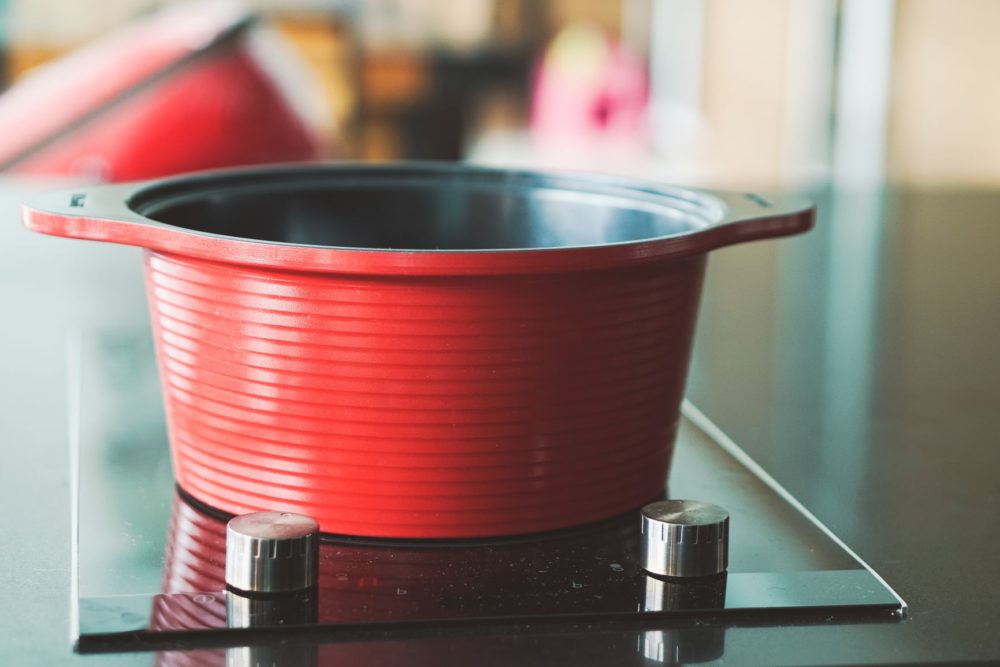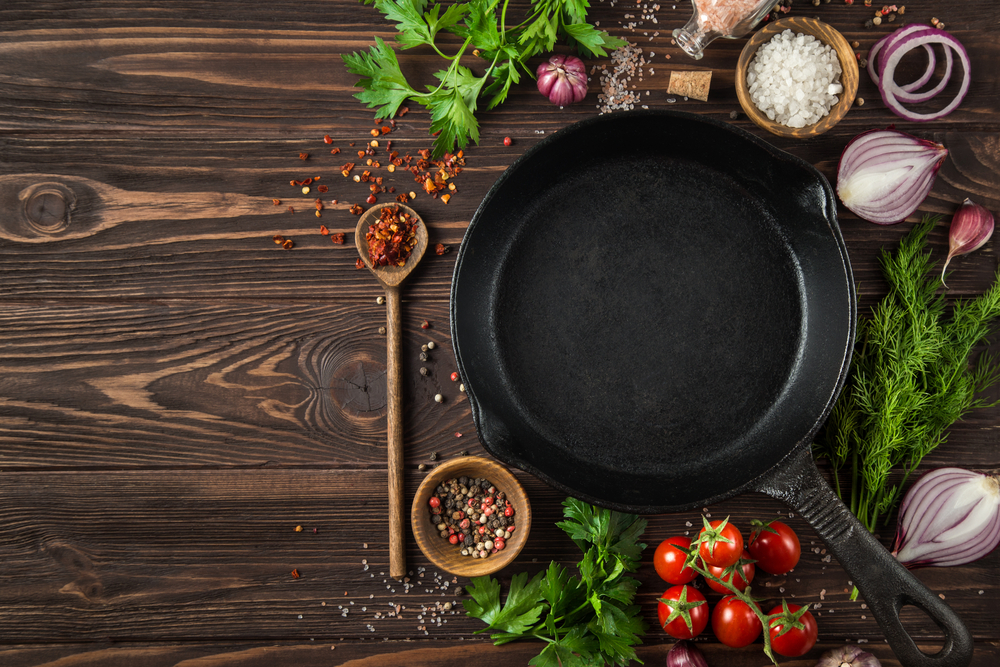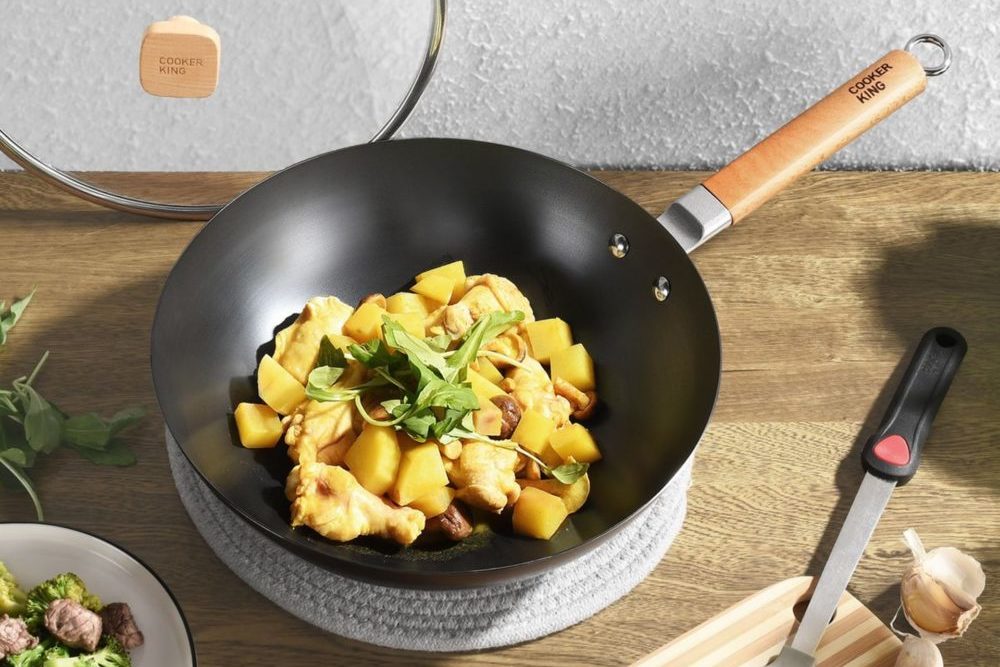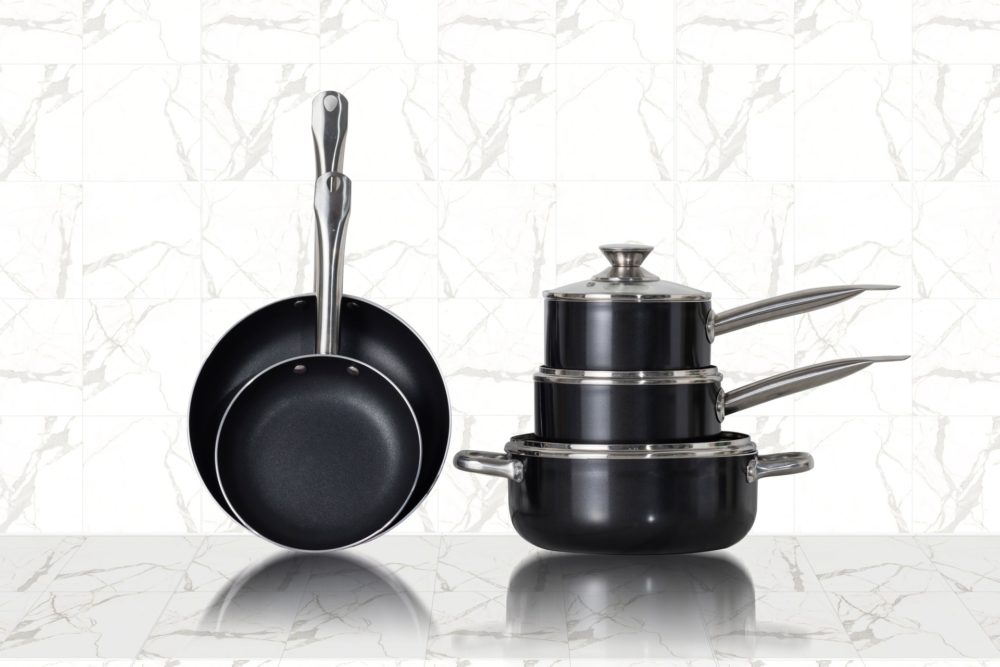Cast iron cookware is the hulking, brute of the kitchen. It gets the job done and can handle a lot of use and abuse.
Glass cooktops are perhaps the complete opposite! They do a great job and have their own benefits, but they can’t be called strong!
If you’ve recently switched to a glass stovetop you might, even now, be preparing to part with your beloved cast iron skillets, pans, or dutch ovens.
After all, conventional wisdom will have us believe that these two items are not compatible.
Well, before you ship your cast iron cookware off to a new home, take a gander at what we’ve got to say. You might be pleasantly surprised!
Cast Iron
Cast Iron has been used for millennia by the Chinese and other Asian cultures as a sturdy and durable material for cookware.
The main feature of cast iron cookware is its ability to stay remarkably hot for long periods of time.
This made it popular and pervasive until the 1970s as it meant less fuel was needed to maintain a high cooking temperature.
In the 1970s, Teflon became the next big thing. It shifted cast iron from its throne because of its non-stick properties. Cast iron, while strong, hot, and durable, is not non-stick.
Cast iron is, at the moment, undergoing a bit of a revival. It has become massively popular with foodies and food bloggers.
Partly because it looks great in an Instagram photo, but also because of it’s wonderfully versatile nature. You can bung it in the oven, on the hob, in the broiler, on the barbeque, pretty much anywhere!
Cast iron came down in price in the 70s, 80s, and 90s as it became less popular. Many cast iron pieces ended up in yard sales or second-hand shops. This fairly low price has made cast iron more endearing to younger homemakers with less income.
However, as the popularity increases, so too does the price tag. If you’re unlucky enough not to have inherited a cast-iron skillet from your Granny or to have found a set of cast iron pans at the yard sale, you can expect to pay a fair bit for new items.
That being said, the investment is a lifelong investment. Cast iron cookware is bloody durable! There’s not a lot you can do to damage these heavy-duty pans.
Glass Cooktops
Glass stovetops are more correctly termed glass-ceramic stovetops. They benefit from having glass and ceramic crystals in their makeup.
The major benefit of glass-ceramic stovetops is that they can withstand significant temperature changes.
In some cases, they can take temperatures of over 1000°F. This is a bit excessive for the kitchen but does have some industrial applications.
Another key feature of glass-ceramic is that it can be heated and cooled rapidly and repeatedly without reducing the structural integrity. This is key for stovetops in busy households!
While glass-ceramic is stronger mechanically, in that it can cope with temperature changes, it is still brittle. This means that a good bash from something hard and heavy will do a lot of damage.
That being said, glass-ceramic stovetops are popular for several reasons. First and foremost, they are super easy to clean! The flat surface means you just need a damp cloth to shift grime.
Another great reason to choose glass stovetops is the fact that they are super efficient. The heat from the infrared heating elements travels straight up and into your pan because the surrounding material is a poor heat conductor.
This means that heat isn’t lost to the air as with gas burners.
Using Cast Iron on Glass Cooktops
Having looked at both materials, we can spot some pretty glaring issues.
First and foremost, cast iron is heavy and cumbersome if that lands hard on the glass stovetop it is going to do damage.
Another issue you may have with this pairing is that cast iron cookware often has a raised rim rather than a flat bottom.
This can cause your pan to heat unevenly on a glass stovetop, especially if it is an induction stove.
However, cast iron and glass-ceramic are not enemies. In fact, they can work together quite well as long as you take some precautions.
- Don’t slide or shake your pan.
You might be familiar with the image of chefs giving their pan a bit of a shake to saute or flambe the food. Often, sparks are struck between the burner and the iron pan giving the whole scene an edgy, professional look.
Well, if that’s what you’re into, don’t pair cast iron with glass stovetops. You can’t shake or slide cast iron on glass cooktops because it will scratch the surface.
Always lift your pans on and off the stovetop. If you need to saute, you’ll have to shake the pan in the air or use a utensil to stir.
Remember, cast iron is heavy. If you can’t lift it comfortably, it has no business being on a glass stovetop. You’re just asking for trouble.
- Wash the outside of the pans.
Cast iron pans are not inherently non-stick. They are actually quite tacky before they get their seasoning.
When we talk about seasoning and cast iron cookware, it has nothing to do with herbs or spices. No, seasoning is all about building up layers of oil of fat on the surface of the pan. These layers create a non-stick surface that protects the pan.
There are lots of different opinions about seasoning and how to maintain it. That’s not what we’re focusing on here. The issue with seasoning is that when the pan heats up, the oil or fat can leak onto the stovetop.
Now, spills aren’t a massive issue with glass cooktops. However, if a spill is allowed to stay on the glass it can carbonize and stain.
To avoid staining your glass stovetop, you should wipe down the outside of your pan before cooking with it.
Once you’ve finished cooking, make sure to wipe the glass as soon as it’s cool enough to touch.
- Keep your cookware in good condition.
Old cast iron pans are great, for sure. They work well enough in that they still get hot and stay hot. The issue can be with chipping or burrs on the edges of the pans.
These sharp or raised points can result in a lot of pressure being put on the glass in one place. This, in turn, can cause the glass to shatter.
Always inspect your cast iron cookware for burrs or divots that may cause problems. Get them filed down or treated before using them on a glass cooktop.
- Heat slowly and carefully.
As mentioned, cast iron cookware is not always flat bottomed. This means that heat spots can form on the cooking surface during heating. There’s not a great deal you can do to mitigate this.
The best thing is to keep a close eye on your food and the pan. If you notice a heat spot try to avoid it.
You should also heat your cookware slowly. This will prevent some heat spots from forming.
Start at a fairly low temperature. When the pan reaches this temperature, turn the heat up a bit. Continue until the pan is at the desired temperature.
Final Thoughts
Your manufacturer’s information may recommend that you do not use cast iron on glass stovetops. They are being extra cautious to try and limit damage claims.
The truth is you can use cast iron on glass stovetops so long as you are careful. Cast iron doesn’t pose immediate risks as long as it is used in a considered manner.
That being said, if your manufacturer’s guide specifically recommends you avoid cast iron your warranty may be null and void if you choose to use cast iron cookware.






